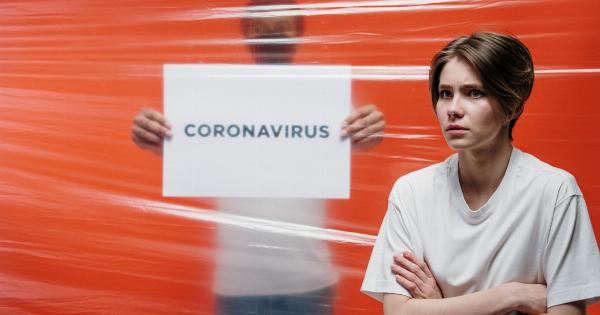Undergoing a mastectomy (removal of one or both breasts) can be an overwhelming and emotional experience for anyone. However, reconstruction can offer hope and comfort by restoring a woman’s sense of femininity and self-confidence.
Fortunately, there are several options for breast reconstruction after mastectomy that can help create a natural-looking breast mound. But the type of breast reconstruction that best suits a woman’s needs will depend on various factors, including her general health, body shape, and personal preferences.
1. Implant Reconstruction
When it comes to breast reconstruction after mastectomy, implant reconstruction is the most common method used. This procedure involves the placement of a saline or silicone implant in the breast tissue.
Implant reconstruction is usually a two-stage process, with the first surgery inserting an expander under the pectoral muscle. The expander is gradually filled with saline over several weeks or months to stretch the skin, allowing for the insertion of the implant during the second surgery.
This method of breast reconstruction after mastectomy is typically less invasive than other options, making it a popular choice for many women.
However, implant reconstruction may require the need for further surgeries to replace the implant or address any complications that may arise.
2. Autologous Tissue Reconstruction
In contrast to implant reconstruction, autologous tissue reconstruction (or flap reconstruction) uses the patient’s tissue to reconstruct the breast.
This procedure can use tissue from the patient’s abdomen (TRAM flap), back (latissimus dorsi flap), or buttocks (gluteal flap). Patients often prefer autologous tissue reconstruction because the breast mound feels and looks more natural, and the reconstructed breast can age similarly to the normal breast.
Flap reconstruction involves more extensive surgery than implant reconstruction, and the recovery time is likely to be longer.
However, because autologous tissue reconstruction uses the patient’s tissue, there is no risk of implant failure and no need for further surgeries to replace the implant.
3. Combination Reconstruction
Combination reconstruction is a blend of implant and autologous tissue reconstruction. This method of breast reconstruction after mastectomy involves the use of an implant and the patient’s tissue to create a natural-looking breast mound.
The combination method allows the surgeon to provide additional volume to the reconstructed breast, which can be especially beneficial for women with a limited amount of natural tissue available for reconstruction.
Some of the most common combination reconstruction procedures are the DIEP flap (Deep Inferior Epigastric Perforator Flap) and SIEA flap (Superficial Inferior Epigastric Artery Flap).
Both involve the use of abdominal tissue to create the breast mound, with the DIEP flap utilizing only skin and fat from the lower abdomen, while the SIEA flap uses skin and fat from a more extensive portion of the abdomen’s surface. Similarly to other breast reconstruction options, combination reconstruction has its potential drawbacks, including the need for multiple surgeries and prolonged recovery time.
4. Nipple Reconstruction
Nipple reconstruction is a supplementary option available to women seeking breast reconstruction after mastectomy. After the construction of the breast mound, some women may opt for nipple reconstruction to complete their breast’s natural look.
Nipple reconstruction typically involves local anesthesia and the creation of a small flap of skin before being shaped like a nipple.
Another option is to tattoo the nipple area once healing is complete. Nipple tattooing involves a medical tattoo artist using ink to create a realistic nipple and the surrounding areola color and texture.
The process is more straightforward than nipple reconstruction, and many women find it a viable alternative.
5. Timing of Reconstruction
One of the most crucial factors in breast reconstruction after mastectomy is when to undergo the procedure. While some women opt for immediate reconstruction, others may delay the procedure to focus on cancer treatment and recovery.
Immediate reconstruction often involves coordination between the breast surgeon and the reconstructive surgeon to achieve the most optimal results. Delayed reconstruction is typically preferred by women who need to undergo further cancer treatment or if they need time to decide on an appropriate reconstruction option.
6. Risks of Breast Reconstruction After Mastectomy
As with any surgical procedure, breast reconstruction after mastectomy has certain potential risks and complications. These can include issues such as infection, bleeding, anesthesia complications, or implant failure.
It is essential to discuss all potential risks with a surgeon thoroughly and understand the risks and benefits before making any decisions.
7. Choosing a Surgeon
When considering breast reconstruction after mastectomy, choosing the right surgeon is critical. Patients should look for a qualified board-certified plastic surgeon with experience and a solid reputation in breast reconstruction.
Communication is also essential, and patients should feel comfortable discussing their concerns and preferences with their surgeon.
Conclusion
Breast reconstruction after mastectomy offers a sense of hope and comfort amidst a challenging and emotional time.
Whether choosing implant reconstruction, autologous tissue reconstruction, combination reconstruction, or a combination of several reconstruction methods, patients should discuss their options thoroughly with their surgeon. Patients should consider their personal preferences, medical history, and body shape before making a decision on the type of breast reconstruction to undergo.
With the right surgeon and careful consideration, breast reconstruction after mastectomy can be a successful and rewarding experience.





























